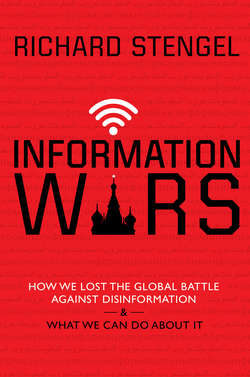Читать книгу Information Wars - Richard Stengel - Страница 28
На сайте Литреса книга снята с продажи.
Bringing Back Our Girls, Slowly
ОглавлениеA week later, on April 14, 2014, I got a sense of just how rapid the rapid-response mechanism of CSCC was. Most Americans had never heard of Boko Haram when news organizations began reporting that the group had kidnapped 276 girls from a secondary school in Chibok, a town in Borno State, Nigeria.4 Boko Haram was an Islamic terrorist group formed in 2002 in northeastern Nigeria. Its aim was to turn Nigeria into an Islamic state under sharia law. According to U.S. intelligence, Boko Haram had formed an alliance with al-Qaeda in the Islamic Maghreb in 2011. Over the past few years, Boko Haram had been responsible for hundreds of attacks, multiple bombings, and thousands of deaths in northeastern Nigeria, murdering far more people than al-Qaeda.5
Alberto came to me and said this would be a good opportunity for CSCC to branch out a bit and do some counter–Boko Haram social media and show support for the kidnapped girls. He proposed that CSCC do some quick mock-ups. Great. The next day, CSCC showed me some potential banners. They were poorly designed, not very modern-looking, and quite bland, but what the heck, government wasn’t known for its aesthetic sense. I approved them immediately because I didn’t want to delay our efforts.
In the meantime, the story had captured people’s attention. A hashtag started trending on Twitter: #BringBackOurGirls. It turned into a social media supernova when First Lady Michelle Obama posed for a picture holding up a sign with the handwritten hashtag. “In these girls, Barack and I see our own daughters,” she said in a video.6
I didn’t think about the banners again and just continued to monitor the situation on the ground. Ten days later, Alberto came to see me and said, I need your help on something. What about? Well, he said sheepishly, the banners had not been able to get through the clearance process. What? The Africa bureau had objected to them. We made some changes, he said, and they were approved, but then the Bureau of Intelligence and Research objected to those changes. It was a bureaucratic standoff, and he wanted to see whether I could fix the problem. This was insane. A ten-day-old tweet might as well not exist.
The clearance process was unmistakable evidence that State was a horizontal culture as well as a vertical one. Almost every memo or note or paper that was going from one level to another, or one bureau to another, was subject to the clearance process. Any bureaus, functional or regional, that had a stake in the paper had to “clear” it before it went to the next level. And since they were so protective of their equities, they wanted to weigh in to make sure someone else wasn’t treading on their turf. This illustrated another axiom at State: many more people could say no than say yes. A deputy assistant secretary or a special assistant could not initiate policy or even commission an anti–Boko Haram tweet, but they could kill it by refusing to clear it.
Even when things did get through, the clearance process made a mockery of deadlines. It optimized for purity over urgency. Things that I originally expected to take hours would take days; things that I thought would take days would take weeks; and things that I thought would take weeks would take months. And I haven’t even mentioned the reclama process. Don’t know that word? I didn’t either. A reclama—from the Latin reclamare, meaning “to cry out in protest”—was a request made through the chain of command to reconsider a decision. So this meant that even after the final decision had been made by a principal and cleared, you could request that it be overturned. To me, it seemed like asking for the referee’s call to be reversed after the game was over. At State, the term was used as a verb, as in “you can reclama it.” And that’s what had happened to the Boko Haram banners—they had been reclama’d again by the Africa bureau.
When Alberto left my office, I picked up the phone and called David Wade, the Secretary’s chief of staff, to explain the situation. He had a one-word response: “Jesus!”
The banners were cleared and posted within two hours.
